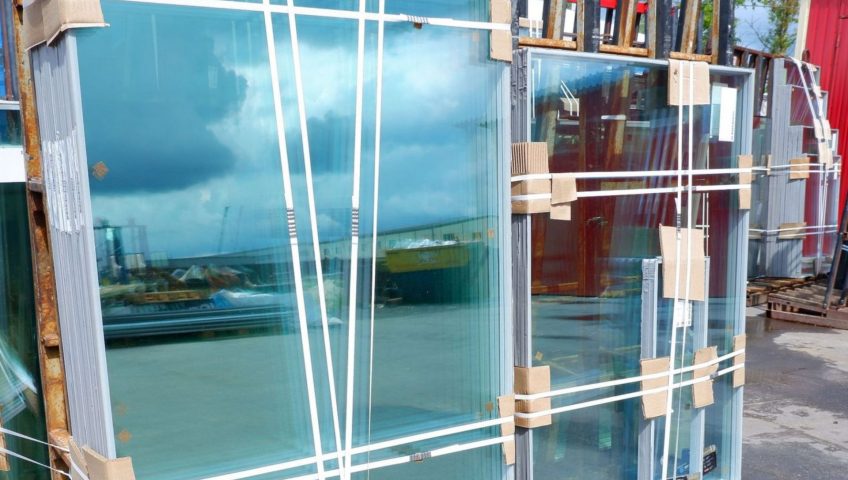How Low-E Glass Coating Can Help Lower Your Utility Bills
Did you find your home or commercial building too cold this past winter? Did it feel like too much heat was coming through during the summer months? With temperatures smashing records across the country, this could be a good sign your building isn’t as energy efficient as you thought.
Rising energy costs and extreme temperatures are on the horizon. What can you do to reduce heat loss or heat gain in your home or business? Low-E glass windows are an effective barrier to the outside world. This is a great design choice when building a forever home, or replacing outdated single-paned windows.
What Is Low-E Glass?
Low-E stands for “low-emissivity”. This is a coating on the glass that controls heat transfer within the insulated glazing. A Low-E coating is a thin, virtually invisible, metal or metallic oxide layer applied on the glass surface or suspended between the panes. The coating or film allows light to come in but prevents harsh UV rays from transmitting through the glass.
In other words, Low-E glass reflects heat in the summer and helps keep heat inside during the winter.
How Is Low-E Glass Made?
Low-E glass is manufactured by applying specific metallic coatings such as silver, zinc, or tin. There are two types of Low-E glass: hard coat and soft coat.
Hard coat Low-E glass is made by pouring a thin layer of molten tin onto a sheet of glass while the glass is still slightly molten. The tin is welded to the glass, which makes for an extremely hard surface to scratch. This often has a bluish tint to it.
Soft coat Low-E glass involves the process of adding silver, zinc, or tin to glass in a vacuum. The glass enters a vacuum chamber filled with an inert gas that is electrically charged. The electricity combined with the vacuum allows molecules of metal to delicately coat the glass.
Typically, argon gas or krypton gas is used during the soft coat process. Both are inert, non-toxic, clear, and odourless. When either type is added to the inner surface of a dual-pane or insulated glass unit, it’s referred to as a Low-E insulated unit.
But which is better for your home or commercial building? Hard coat or soft coat?
Glazing Options For Your Windows
The two types of Low-E glass have different performance characteristics. This all depends on what you need for your residential glass or commercial glass needs.
Soft coat Low-E glass has the ability to reflect much more heat back to the source.
Hard coat Low-E glass tends to not have the same energy-efficient properties as a soft coat.
As far as options go, soft coat Low-E glass will provide the best energy values in the marketplace. If you want superior protection against harmful UV rays and reduced energy costs, Low-E glass is the perfect material choice.
Low-E coatings are usually applied during the manufacturing process, but there are some products available for do-it-yourselfers. These films are relatively inexpensive compared to total window replacement, but they will most likely not last as long. Depending on which coating you choose, Low-E glass can filter out 40% to 70% of the heat normally transferred through window glass.
With most things home-related, the more you invest the more you’ll save in the future.
Why Is Low-E The Popular Choice For Windows?
This is the ideal choice for all climates – as far as heating and cooling costs are concerned. While windows manufactured with Low-E coatings will cost more than regular windows, they can reduce energy costs by 30% to 50%. Energy bills are more than likely going to rise in the coming years, so being prepared to reduce energy loss will help you save big. While single glazing is common in older buildings, virtually all new buildings use double or triple glazing units. These “insulated glazing units” (or IGUS) are available in a wide variety of choices. These are based on the type of glass, coatings, and gas used to fill the space between the panes and the spacers that keep the glazing separated.
Did you know Low-E glass reduces interior condensation better than single-pane, clear glass windows?
The special coating keeps the inside glass surface warmer during the colder months. So you can enjoy a much more comfortable interior. Humidity levels would have to be 4 times higher than a regular window for condensation to appear.
In other words, you can stay cozy in your home or building with far less potential mold or mildew build-up. Low-E glass will also help prevent fabrics from fading inside your home or building.
Low-E Glass Is The Ideal Choice
Unlike other window products, you won’t have to sacrifice natural light in your home or building to accommodate energy efficiency.
By installing Low-E glass, you can enjoy natural light without harmful UV rays.
For most window installations, the most important decision on energy efficiency is the selection of the glazing.
This is a factor for:
- Window orientation
- Climate
- Building design
You may want to choose different types of glazing for different windows throughout your home or building. With anything home-related, the more quality products you invest in, the better the return of an investment will be.
Ask our team of professionals how they can help you reduce your energy costs and increase your home’s energy efficiency today! Planning to build your forever home or looking to replace old windows on your commercial building? Phone or email us today for a no-obligation quote about our windows, and so much more!

